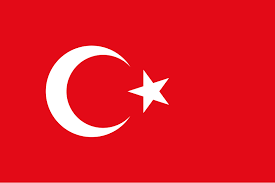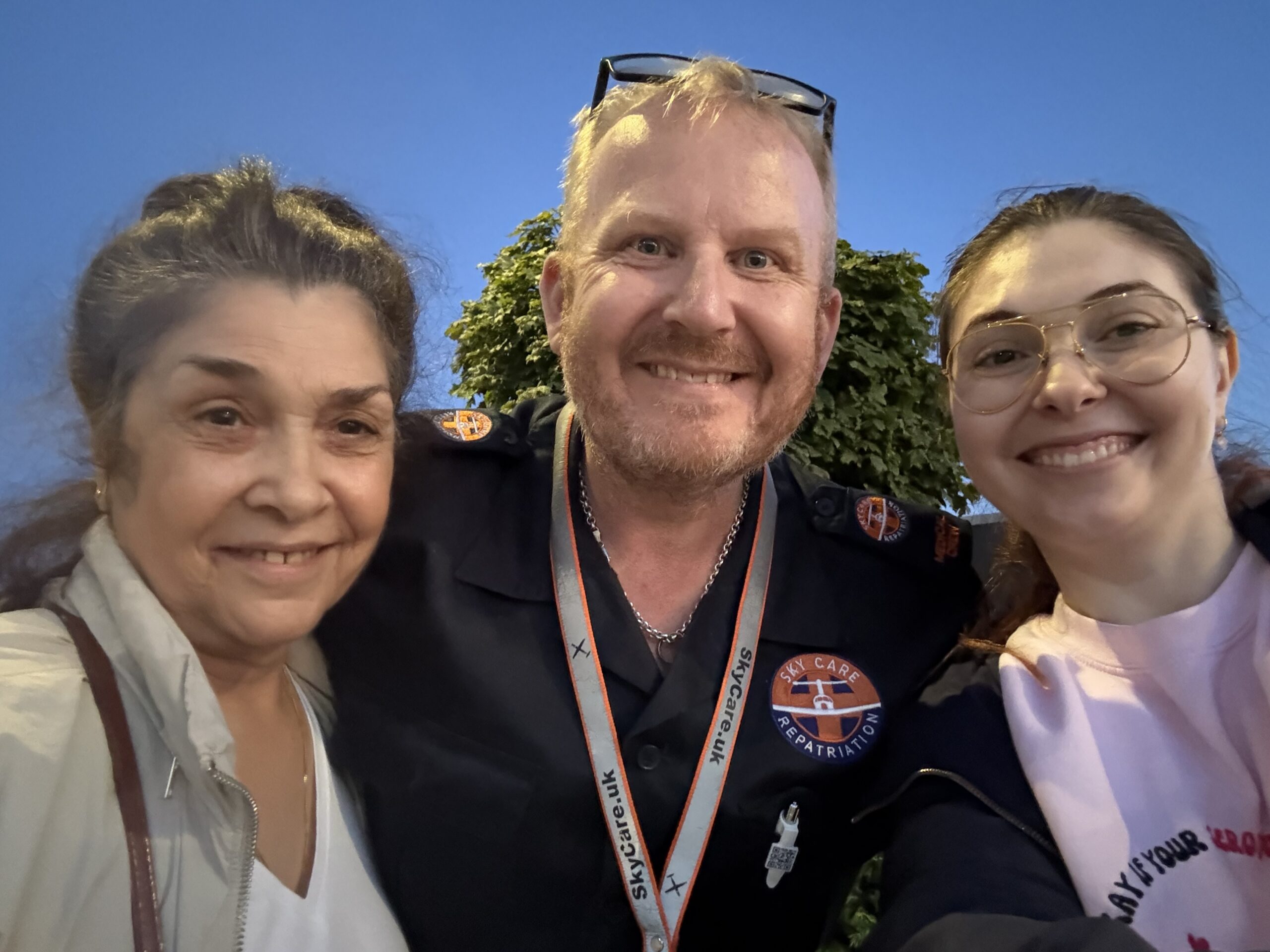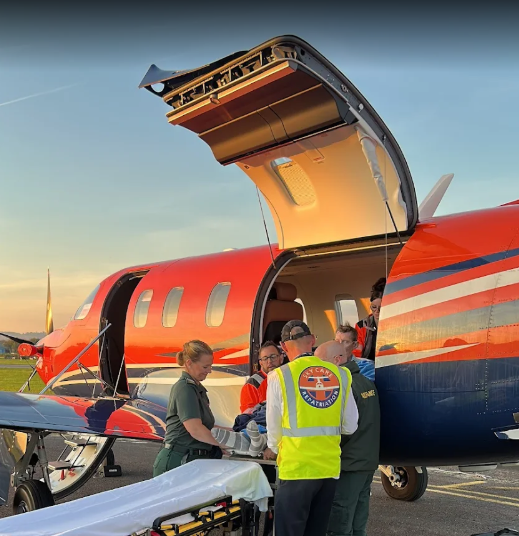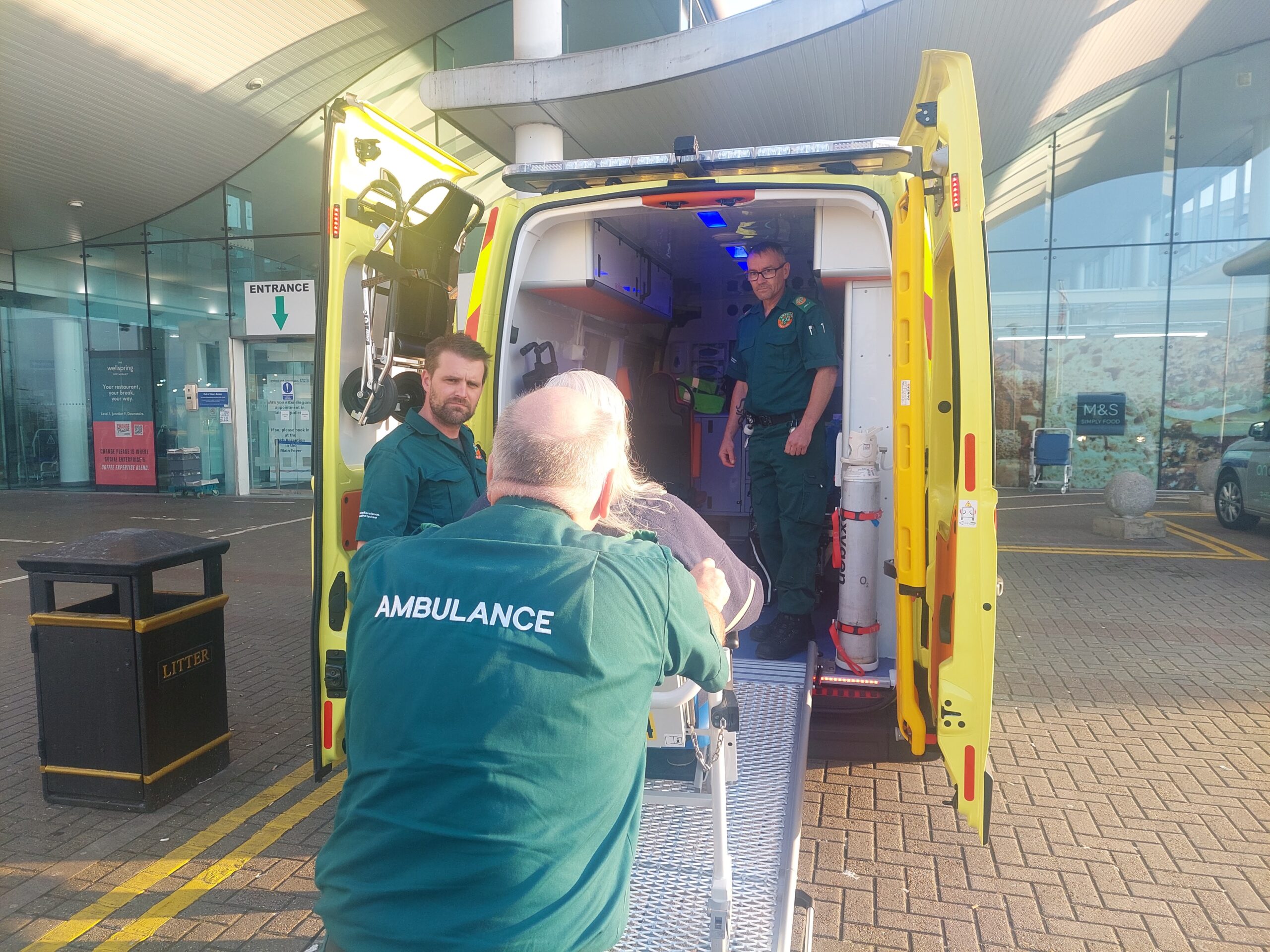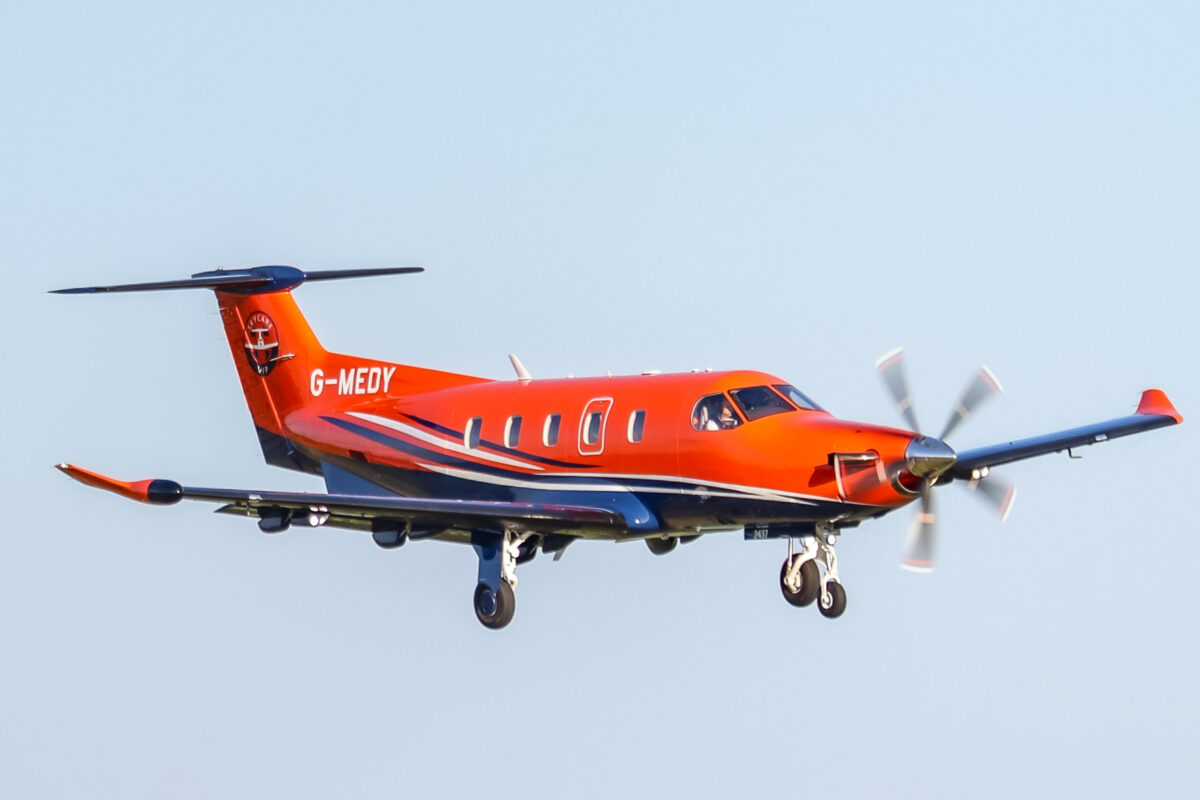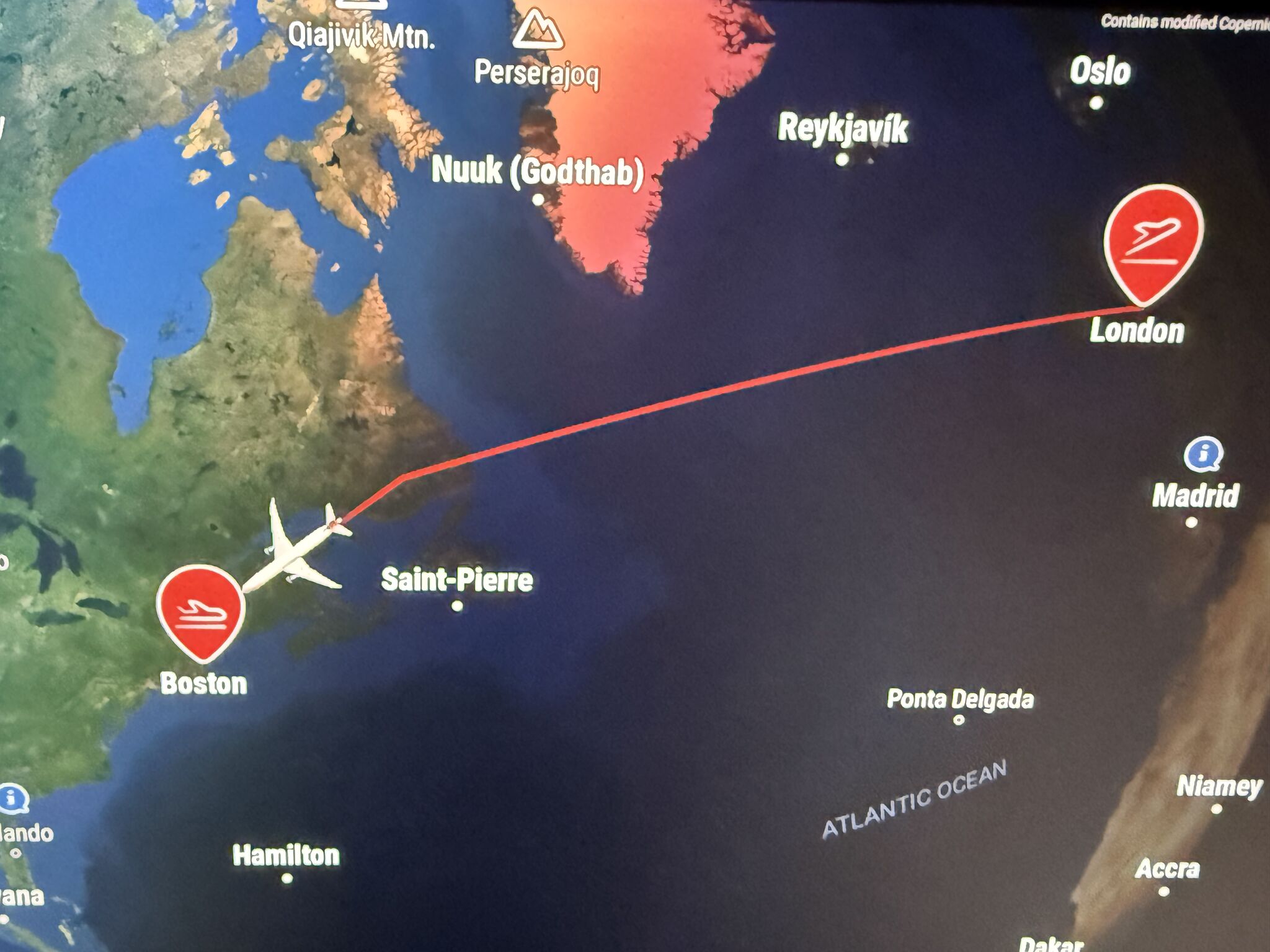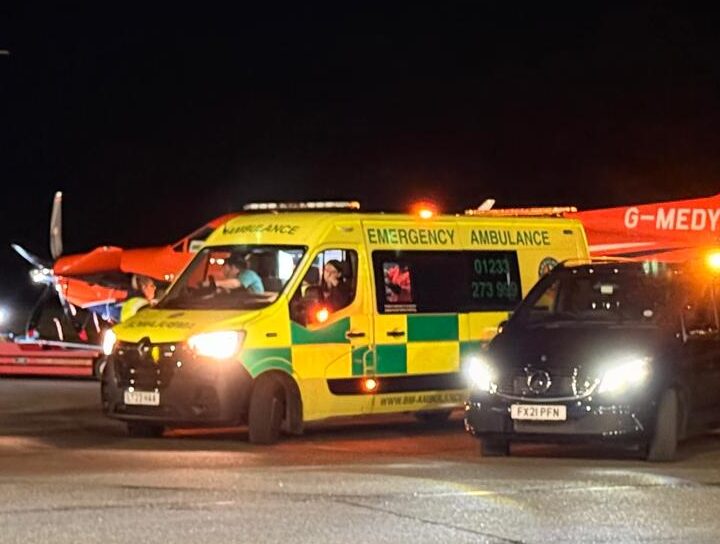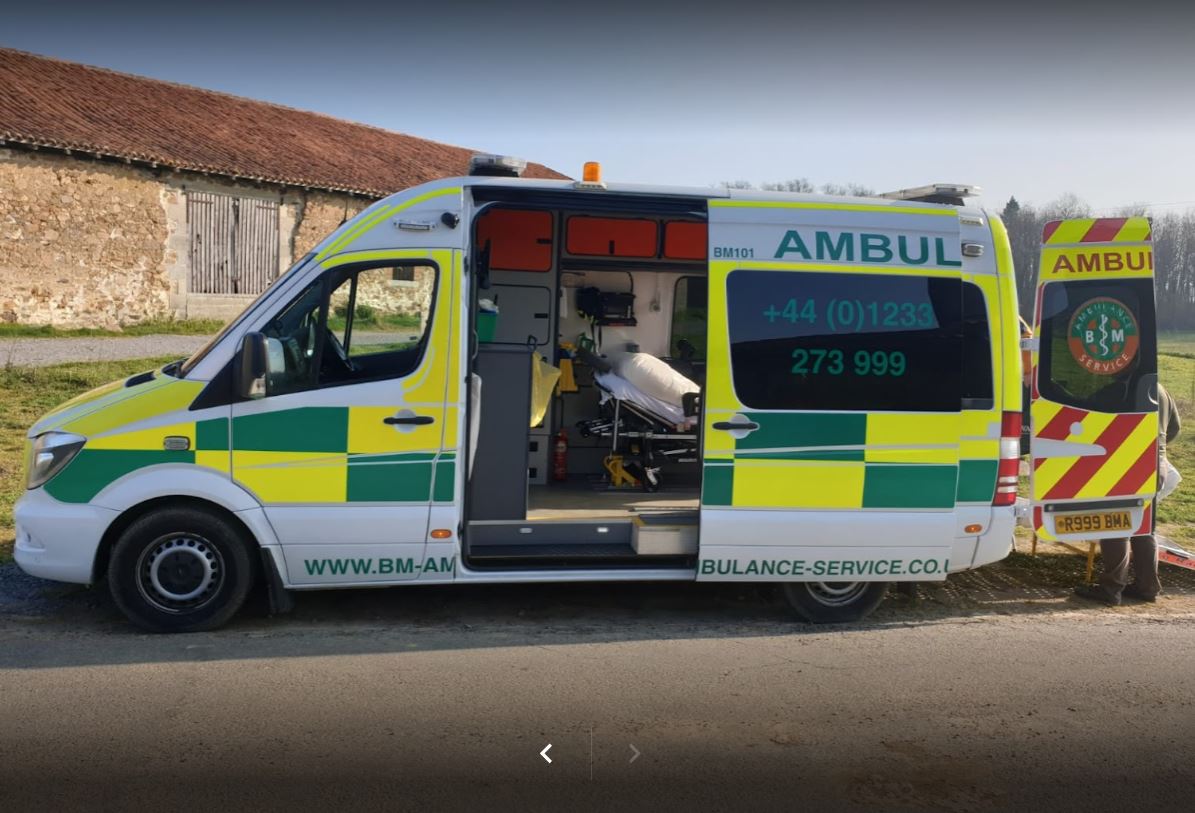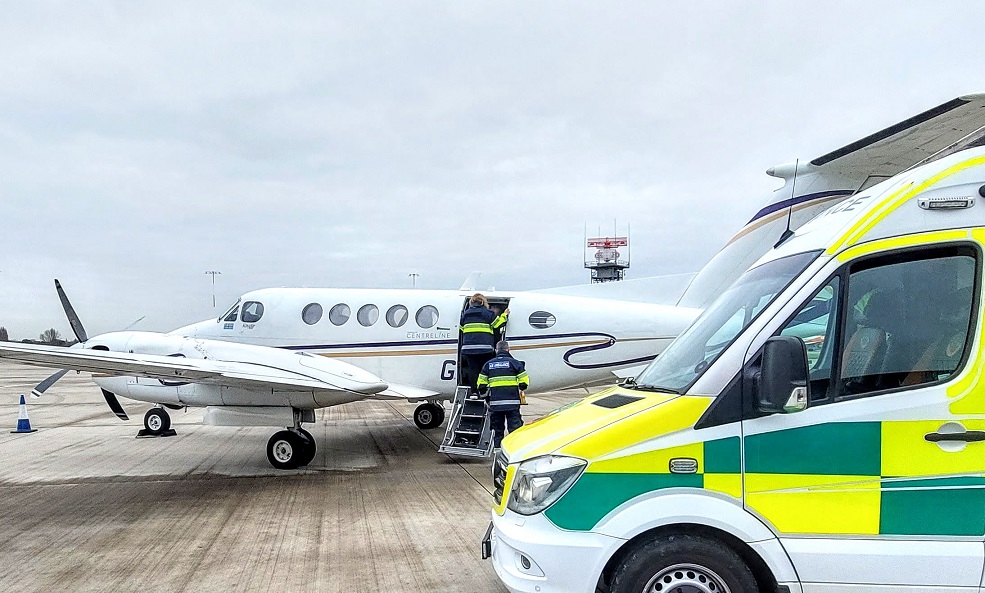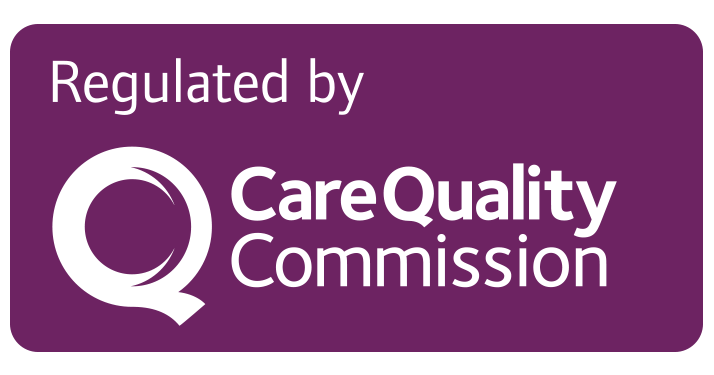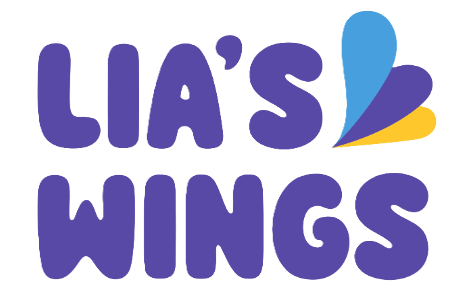Intensive Care Air Ambulance
Specialist ICU air ambulance care — trusted for critical patient transfers across Europe.
When Every Second Counts
SkyCare’s ICU Air Ambulance service delivers safe, medically-led transfers for critically ill patients across the UK and Europe. We support adult and paediatric cases requiring ventilatory support, advanced monitoring, and continuous critical care in-flight — using aircraft configured to hospital standards and staffed by experienced intensive care professionals.
Our Clinical Priorities
- Transfer the right patient to the right destination, with the right team, using the safest mode of transport.
- Protect clinical stability and ensure seamless continuity of care between facilities.
- Uphold patient dignity, privacy, and safety throughout the journey — from bedside to bedside.
What Is an ICU Air Ambulance?
An ICU Air Ambulance is a fixed-wing aircraft configured to replicate the environment and capability of a hospital intensive care unit. Our fleet includes ventilators, syringe drivers, oxygen therapy, invasive monitoring, suction, defibrillation, and advanced airway tools — including video laryngoscopy and RSI support where indicated. Each mission is planned around the patient’s condition, with a tailored crew and escalation plan to ensure safe in-transit care.
Who We Care For
We regularly manage patients who:
- Require mechanical ventilation and sedation for respiratory failure
- Have neurocritical needs following traumatic brain injury, stroke, or neurosurgical intervention
- Are unstable post-transplant, cardiac, or major abdominal surgery
- Present with multi-organ failure or require inotropic support
- Are receiving advanced palliative or end-of-life care closer to home
- Include neonatal and paediatric ICU cases requiring incubators or specialist paediatric teams
Typical Use Cases
- Emergency medevac: From hospitals abroad or within the UK where deterioration necessitates urgent transfer to higher-level care.
- Planned inter-facility transfers: Coordinated moves between NHS or private hospitals for specialist surgery, imaging, or rehabilitation.
- Repatriation of UK citizens: Following hospitalisation in Europe, with return to ICU-level care in the UK.
- Overseas discharges: Where patients are ready to travel but still require intensive monitoring and support en route.
Clinical and Logistical Coordination
We manage all aspects of the transfer, including:
- Medical case review by our critical care consultants
- Bed confirmation at the receiving ICU or HDU facility
- Direct liaison with sending and receiving clinical teams
- Deployment of a specialist critical care flight team
- Flight planning, aircraft clearance, and ground ambulance legs
- Comprehensive documentation for NHS case managers or insurers
Critical Care Transport: Key Questions Answered
Our ICU-configured air ambulances are designed to mirror most of the capabilities of a hospital intensive care unit, enabling continuous treatment for critically ill patients during flight. Each aircraft carries a complete inventory of advanced life-support systems, tailored to the specific clinical condition of the patient.
At a minimum, all flights include:
- Ventilation and airway support: Transport-grade ICU ventilators (e.g. Hamilton T1), with volume and pressure control modes, PEEP adjustment, and invasive/non-invasive settings. Advanced airway kits and suction devices are always on board.
- Haemodynamic monitoring: Multi-parameter monitors capable of ECG, SpO₂, NIBP, IBP (arterial and CVP), temperature, and EtCO₂ readings. Invasive lines are supported where necessary.
- Infusion management: Syringe drivers and volumetric infusion pumps for sedatives, vasopressors, antibiotics, or TPN. Drug libraries can be pre-loaded based on hospital protocols.
- Emergency and resuscitation equipment: Defibrillator, advanced airway and crash kits, antiarrhythmic drugs, and intubation support.
- Oxygen and suction: Aircraft-integrated oxygen supplies with backup cylinders, and high-flow suction units for airway clearance or chest drain management.
- Temperature control: For neonatal and certain adult missions, we provide warming devices or controlled incubators with ambient temperature monitoring.
Optional specialist kits include:
-
- Neonatal incubators: Servo-controlled units with ventilator, monitoring, and heating systems, suitable for VLBW (very low birth weight) babies or preterms.
- Blood gas analysers: Point-of-care devices for in-flight ABG analysis when managing ventilated or acidotic patients.
- Video laryngoscope: Available for anticipated difficult airway management or where rapid sequence intubation may be required in-flight.
Our medical coordination team configures every flight case-by-case. If a sending hospital requires specific equipment to be mirrored in the aircraft, we liaise directly to match those protocols and support any handover risks.
Our ICU air ambulance service is designed for critically ill patients who cannot be safely moved by standard road or commercial airline transport. These patients require continuous intensive care monitoring and intervention throughout the journey, and often depend on ventilatory support, vasopressors, or specialist clinical oversight. We regularly manage transfers across all ages — from neonates to adults — where deterioration, instability, or clinical risk necessitates advanced aeromedical care.
Common patient groups we transport include:
- Post-operative patients with complex recovery needs after major surgery (cardiothoracic, neurosurgery, abdominal trauma, organ transplantation).
- Patients on mechanical ventilation, including those with acute respiratory failure, pneumonia, or post-COVID complications.
- Stroke or neurology cases requiring sedation, intracranial pressure monitoring, or stroke centre repatriation after overseas admission.
- Multi-trauma or polytrauma patients, especially those with spinal, pelvic, or craniofacial injuries needing logroll management and in-transit pain control.
- Septic patients in early or resolving phases of sepsis or septic shock requiring inotropic support or fluid resuscitation monitoring.
- Cardiac and circulatory compromise, such as patients with myocardial infarction, cardiogenic shock, post-resuscitation care, or awaiting further intervention.
- Oncology patients needing protected, comfortable transfer due to immune suppression or palliative complexity.
- Critically ill children and neonates including ventilated preterms, congenital anomalies, or paediatric ICU discharges abroad.
Each case is assessed by our medical coordination team and a bespoke risk profile is built before deployment. In cases of repatriation, we liaise with the overseas hospital to ensure the patient’s in-flight risks are clearly understood, and assign a critical care team based on condition, interventions, and the need for escalation during transfer.
Each ICU air ambulance mission is staffed based on the patient’s medical complexity, clinical risk, and anticipated needs during the journey. Our medical coordination team conducts a full pre-flight case review, including hospital liaison, documentation review, and direct communication with the treating clinician where necessary.
The selection process includes:
- Patient condition: Diagnosis, current stability, interventions (e.g. ventilation, sedation, vasoactive drugs), and any recent deterioration.
- Required in-flight care: Likelihood of active management (e.g. sedation adjustment, airway support, fluid boluses), and whether invasive monitoring or drug infusions must continue during transfer.
- Age group: For neonatal or paediatric patients, we deploy clinicians specifically trained in PICU/NICU retrieval, typically with neonatal nurses or paediatric intensivists as required.
- Clinical redundancy: For unstable patients, we staff to a higher ratio — usually both a doctor and nurse or paramedic — to allow simultaneous interventions if the patient deteriorates mid-flight.
Typical team configurations include:
- Adult ICU: Doctor (consultant in emergency medicine or anaesthesia) + critical care nurse or advanced paramedic.
- Paediatric: Paediatric intensive care doctor or retrieval-trained nurse + paediatric paramedic or general support.
- Neonatal: Neonatal consultant or registrar + neonatal nurse, with incubator-trained crew and monitoring staff.
All clinicians are pre-approved by our medical governance team, and have extensive experience in pre-hospital critical care or retrieval medicine. We match clinical skills to patient complexity, so every case receives the appropriate expertise for a safe and stable transfer.
We understand that time is critical when a patient requires intensive care transport. In many cases, SkyCare can dispatch an ICU-configured air ambulance within 24 hours of confirmation — depending on the patient’s stability, destination, and international clearances. However, speed must always be balanced with patient safety and continuity of care — particularly for ITU-level patients requiring complex interventions.
Key steps in the process include:
- Full medical documentation: We require detailed, up-to-date clinical notes — including diagnosis, recent interventions, ventilator settings, blood results, and medication lists. This allows our team to assess transfer risks and build the correct clinical plan.
- Receiving hospital bed availability: For any ITU transfer, a confirmed bed at the receiving intensive care unit is mandatory. We liaise with the destination facility to confirm capacity and acceptance before launching any transfer.
- Multidisciplinary case review: Our medical coordination team — including a critical care doctor — reviews all documentation to determine the safest flight profile, medical team, and any special equipment or drugs required en route.
- Flight and operations planning: We coordinate all aviation logistics, including aircraft readiness, flight plan filing, overflight/landing permissions, and ground ambulance legs.
In some cases, especially for long-haul or ventilated patients, we also request direct clinician-to-clinician handover calls to ensure nothing is missed. This improves pre-transfer planning and continuity on arrival.
Once all clinical, logistical, and regulatory elements are confirmed, the mission can usually proceed within 24–48 hours. We always keep referring teams and family updated, and adjust timing if a delay is needed to stabilise the patient further.
Trusted Service
Contact Us for Your Intensive Care Air Ambulance Needs
If you need expert medical transport for a critically ill patient, we’re here to help. Our Intensive Care Air Ambulance service provides the highest standard of care, from the moment the patient is picked up to the moment they are safely delivered to the appropriate hospital or intensive care unit.
Contact us today to discuss your requirements or to request a quote. We’re ready to assist you with your patient transport needs, no matter the distance.
Quick QuoteSkyCare can arrange intensive care air ambulance transfers from many locations worldwide. Below are some of the countries we most frequently operate from
Popular Countries for ICU Medical Repatriation
Feedback
What our clients say.
Accreditations
International Assistance Group (IAG) accredited
AOC (Air operator certificate) #2480

British Business & General Aviation Association
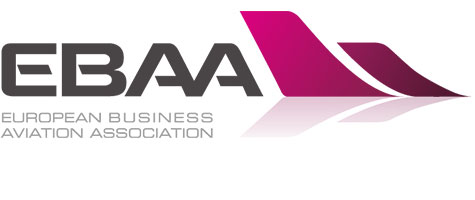

 SkyCare
SkyCare 

